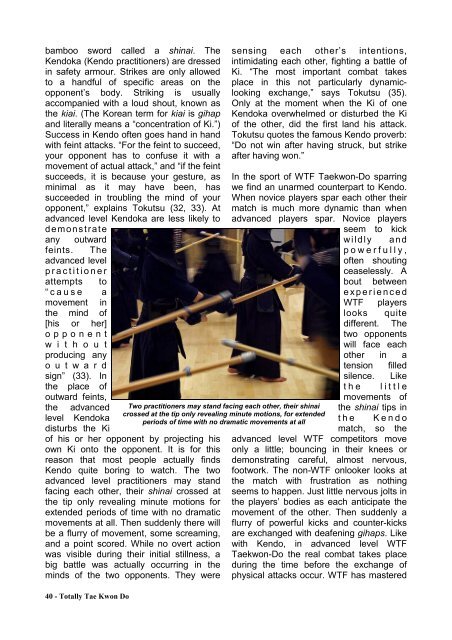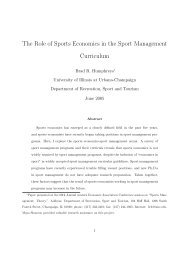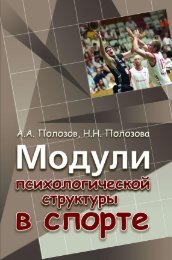Totally Tae Kwon Do Magazine - Issue 17 - Usadojo
Totally Tae Kwon Do Magazine - Issue 17 - Usadojo
Totally Tae Kwon Do Magazine - Issue 17 - Usadojo
Create successful ePaper yourself
Turn your PDF publications into a flip-book with our unique Google optimized e-Paper software.
amboo sword called a shinai. The<br />
Kendoka (Kendo practitioners) are dressed<br />
in safety armour. Strikes are only allowed<br />
to a handful of specific areas on the<br />
opponent’s body. Striking is usually<br />
accompanied with a loud shout, known as<br />
the kiai. (The Korean term for kiai is gihap<br />
and literally means a “concentration of Ki.”)<br />
Success in Kendo often goes hand in hand<br />
with feint attacks. “For the feint to succeed,<br />
your opponent has to confuse it with a<br />
movement of actual attack,” and “if the feint<br />
succeeds, it is because your gesture, as<br />
minimal as it may have been, has<br />
succeeded in troubling the mind of your<br />
opponent,” explains Tokutsu (32, 33). At<br />
advanced level Kendoka are less likely to<br />
demonstrate<br />
any outward<br />
feints. The<br />
advanced level<br />
practitioner<br />
attempts to<br />
“cause a<br />
movement in<br />
the mind of<br />
[his or her]<br />
opponent<br />
w i t h o u t<br />
producing any<br />
o u t w a r d<br />
sign” (33). In<br />
the place of<br />
outward feints,<br />
the advanced<br />
level Kendoka<br />
disturbs the Ki<br />
of his or her opponent by projecting his<br />
own Ki onto the opponent. It is for this<br />
reason that most people actually finds<br />
Kendo quite boring to watch. The two<br />
advanced level practitioners may stand<br />
facing each other, their shinai crossed at<br />
the tip only revealing minute motions for<br />
extended periods of time with no dramatic<br />
movements at all. Then suddenly there will<br />
be a flurry of movement, some screaming,<br />
and a point scored. While no overt action<br />
was visible during their initial stillness, a<br />
big battle was actually occurring in the<br />
minds of the two opponents. They were<br />
40 - <strong>Totally</strong> <strong>Tae</strong> <strong>Kwon</strong> <strong>Do</strong><br />
sensing each other’s intentions,<br />
intimidating each other, fighting a battle of<br />
Ki. “The most important combat takes<br />
place in this not particularly dynamiclooking<br />
exchange,” says Tokutsu (35).<br />
Only at the moment when the Ki of one<br />
Kendoka overwhelmed or disturbed the Ki<br />
of the other, did the first land his attack.<br />
Tokutsu quotes the famous Kendo proverb:<br />
“<strong>Do</strong> not win after having struck, but strike<br />
after having won.”<br />
In the sport of WTF <strong>Tae</strong>kwon-<strong>Do</strong> sparring<br />
we find an unarmed counterpart to Kendo.<br />
When novice players spar each other their<br />
match is much more dynamic than when<br />
advanced players spar. Novice players<br />
seem to kick<br />
wildly and<br />
powerfully,<br />
often shouting<br />
ceaselessly. A<br />
bout between<br />
experienced<br />
WTF players<br />
looks quite<br />
different. The<br />
two opponents<br />
will face each<br />
other in a<br />
tension filled<br />
silence. Like<br />
the little<br />
movements of<br />
the shinai tips in<br />
the Kendo<br />
match, so the<br />
advanced level WTF competitors move<br />
only a little; bouncing in their knees or<br />
demonstrating careful, almost nervous,<br />
footwork. The non-WTF onlooker looks at<br />
the match with frustration as nothing<br />
seems to happen. Just little nervous jolts in<br />
the players’ bodies as each anticipate the<br />
movement of the other. Then suddenly a<br />
flurry of powerful kicks and counter-kicks<br />
are exchanged with deafening gihaps. Like<br />
with Kendo, in advanced level WTF<br />
<strong>Tae</strong>kwon-<strong>Do</strong> the real combat takes place<br />
during the time before the exchange of<br />
physical attacks occur. WTF has mastered<br />
Two practitioners may stand facing each other, their shinai<br />
crossed at the tip only revealing minute motions, for extended<br />
periods of time with no dramatic movements at all

















